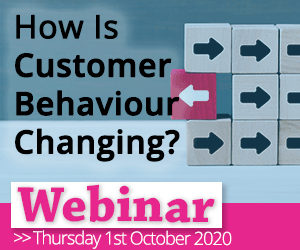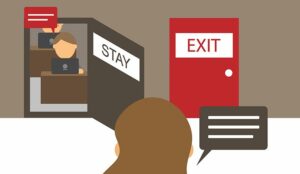Rachael Royds of CallMiner discusses the impact that agent behaviour has on an organisation’s reputation and business.
If you see a business contact for the first time in months and they appear not to be interested in what you have to say, your desire to meet them again is likely to be low. If they also appear keen to move on to their next meeting rather than listen to you, then you’re unlikely to want to invest in that relationship. This is the same reaction that customers will have after a bad experience with your call centre.
If you want to turn your consumers from acquaintances into friends, then you need to make every interaction show that you care about them, regardless of the reason for their call or how often they call.
The CallMiner Index report shows that the wrong behaviour drives churn, with 55% of consumers saying they are very or extremely likely to switch after a bad call centre experience. But it also shows that the right behaviour drives loyalty. In fact, more consumers (78%) said they would be very or extremely likely to stay loyal after a good call centre experience.
So, how confident are you that every interaction that takes place while you read this blog will make customers want to stay loyal? And do you know which behaviour might drive customers away? It’s well worth knowing the answers to these questions. Here are some stats from the CallMiner Index:
- A whopping 82% of consumers in the US have switched in the last 12 months.
- But the total planning to switch is 57%, so there 25% of customers are leaving not planned.
- An Accenture report revealed that 67% of respondents said they switched because of experience, not product or price.
To produce stats as powerful as these, a large percentage of companies must be getting customer experience very wrong. So why don’t companies act to stop customers saying goodbye?
It’s probably because there is a huge disconnect between the customer experience that consumers are receiving and the way CEOs feel their brand is performing.
When interviewed by Bain & Company, 80% of CEOs said they thought their brand delivers superior customer experience, but just 8% of their consumers agreed. One of the reasons behind this huge gulf in understanding is that most companies fail to analyse every customer interaction. Instead they rely on random feedback surveys or random quality assurance of calls. The problem with this latter approach is that decisions are based on a thin slice of the customer experience. It also relies on consumers telling you when they have a bad experience. But the same Bain report identified that 96% of consumers said that they did not tell a brand after a bad experience.
Don’t be fooled by thin slicing your customer experience – turn your contact centre into an insight centre!
Investing in technology that allows you to analyse 100% of interactions across all channels is vital in making sure every person in your organisation understands which behaviour triggers churn and which encourages customers to stay loyal. By adding data from other systems – such as the IVR system – you can also see the impact of poorly performing systems on both the emotion and content in a call. Only by seeing the whole picture in a single insight platform will you be able to see why customers decide to leave.
For example, the CallMiner Index identified that long waiting times are the call centre behaviour consumers want to avoid most (42% of people feel this way). You might say it’s impossible, or too costly, to have agents waiting around for calls that may never come. But if you analyse every interaction, you will be able to identify what triggers calls to your contact centre and also which type of calls take a long time to resolve. Armed with this insight, you will be more able to predict demand and resource accordingly. Better still, you may be able to eliminate the reasons for the calls – such as making it easier to understand bills or invoices.
But something as commonplace as a call centre script can also be a source of annoyance. Over one in five consumers said call centre staff that work to a script that means they ask silly questions which have no relation to the conversation can be enough to make them switch. Analysing every call automatically will identify how often this happens and which agents act this way. Then you can either change the script or coach the agents to use the script more intelligently – or both.
In my view, if you really listen to your customers by automating the analysis of every engagement, you’ll be able to avoid switching by better understanding their needs and servicing them better.
- Which sectors have the biggest churn rates and how that has changed in the last five years
- The main reasons for switching – and how the way you make your customer feel is at the heart of many of them
- The emotional state of customers when they contact a call centre to have their issues addressed and how this changes after the call
- The ten avoidable call centre behaviours that encourage people to switch
This blog post has been re-published by kind permission of CallMiner – View the Original Article
For more information about CallMiner - visit the CallMiner Website
Call Centre Helper is not responsible for the content of these guest blog posts. The opinions expressed in this article are those of the author, and do not necessarily reflect those of Call Centre Helper.
Author: CallMiner
Published On: 8th Nov 2018 - Last modified: 20th May 2022
Read more about - Guest Blogs, CallMiner






 CallMiner is the leading cloud-based customer interaction analytics solution for extracting business intelligence and improving agent performance across all contact channels.
CallMiner is the leading cloud-based customer interaction analytics solution for extracting business intelligence and improving agent performance across all contact channels. 











